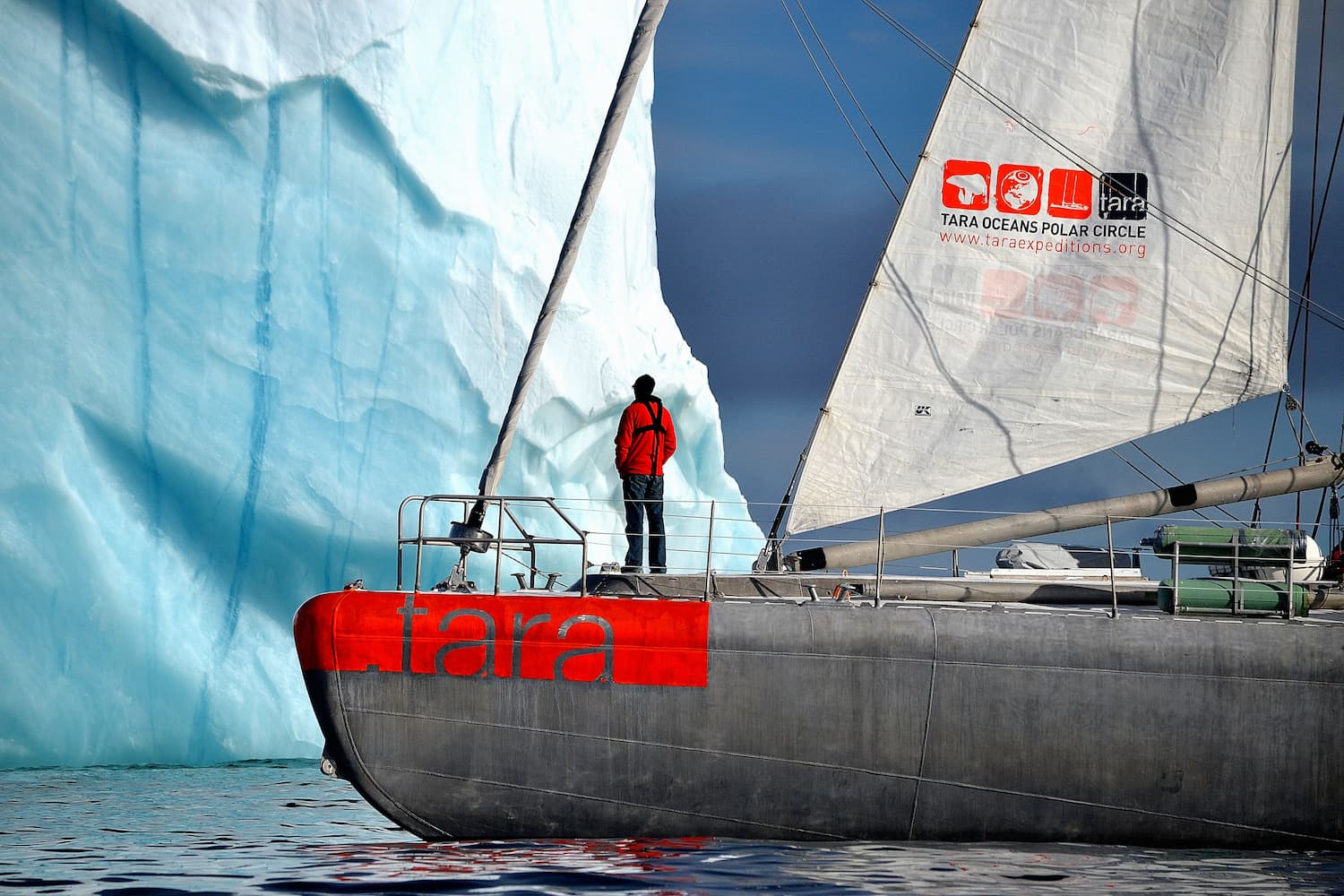Looking for a coccolithophore bloom off Argentina by Flora Vincent
Flora Vincent, a postdoctoral fellow at the Weizmann Institute of Science in Israel, boarded the schooner Tara in December 2021 on the Tara Microbiome mission. She was the scientific leader during the Gayoso oceanographic campaign in Argentina, which aimed to better characterize coccolithophore blooms.
Her journey to become a researcher
A childhood in contact with the Ocean
Flora was born in the south of France. She spent a lot of time during school holidays discovering the Mediterranean Sea. At the age of 8, she became passionate about scuba diving and something clicked: “I could spend hours underwater looking at fish, seaweed or trying to understand the behavior of octopuses! At an early stage, my curiosity was stimulated.” Her thirst for learning developed her desire to become a researcher.
An education axed on science
After earning a BSc in biology, Flora attended a preparatory class in biology, chemistry, physics and Earth sciences (BCPST) in Marseilles to integrate later AgroParisTech, Paris Institute of Technology for Life, Food and Environmental Sciences. For her master’s degree, she chose to study at Paris Descartes University at the Centre de recherches interdisciplinaires (CRI, Center for interdisciplinary research), now renamed Learning Planet Institute. To become a researcher, Flora completed a PhD at the École normale supérieure (ENS) under the leadership of Chris Bowler, a CNRS research director and head of the Plant and Algal Genomics Laboratory at the Biology Institute. It was during this last experience that began her adventure with Tara.
Finally, according to Flora, “our desire to become a researcher comes mainly from our curiosity and willingness to join a large community of scientists who work together to answer ambitious questions.”
Occupation: Scientific research
Understanding interactions between marine microorganisms
She works mainly on research topics related to the marine microbiome: “I’m interested in a community of tiny beings, and more particularly in protists. They are invisible to the naked eye, but represent an impressive diversity and richness. Protists are neither bacteria nor viruses, they form a third large family of underestimated marine microorganisms.”
Over the course of her PhD, Flora became interested in this invisible majority about which our knowledge is rather thin and biased. She focused her research and questioning on the interactions that exist between these marine microorganisms:
- How do these various organisms interact with each other?
- How do these interactions affect plankton development?
- How influential is the environment on all these interactions?
In reality, there are a multitude of behaviors in microorganisms:
- Some viruses infect protists and kill them
- Some bacteria help other protists grow up or, on the contrary, cause their death
- Sometimes, protists can eat each other
- They are also able to live in symbiosis (i.e. when 2 organisms survive only because they are together)
Indeed, there is an important web of interactions in this microscopic marine community, called the plankton social network. Research is trying to unravel its mysteries, but much remains unexplored. In some ways, these interactions bind together the marine ecosystem and can have consequences on large ecological scales.
Therefore, it is primarily through them that the Ocean functions properly. Flora decided to study this web of interactions within plankton: “One of my main focus today is to understand how this network will respond to climate change.”
Data underlying the discovery of a new form of symbiotic interaction
During her PhD, Flora worked on the data collected aboard the schooner. Through her analysis, she described a new form of interaction between diatoms and tintinnids that raises many questions about the evolution and consequences of symbiosis. As of September 2022, Flora will have her own laboratory and explore how such interactions affect the development of marine microorganisms.
Her scientific experience aboard Tara
Her missions as a scientific leader
Flora first embarked on Tara during the Tara Pacific expedition (2016-2018) where she participated in the sampling of plankton. In December 2021, she joined the scientific team of the Tara Microbiome mission as a scientific leader. This oceanographic expedition, named “Gayoso”, aimed to study a coccolithophore bloom, a huge efflorescence of micro-algae: “My upstream role was to prepare this scientific expedition by asking the right questions: What was our scientific questioning? How would we sample aboard the schooner? What team organization did we want to set up for this study and how would we organize the collective work? I was much more involved in the design of the expedition and its conduct, in situ and later during data analysis, than when I first joined Tara Pacific.”
On board, the scientific leader ensured that everyone could work in the best possible conditions (time for exchanges and relaxation, common meal, rest, etc.). For Flora, the most important was to have a good working atmosphere: “I’m convinced that people in a good mood and healthy work well. Sometimes we sampled 7 days in a row, which is a sustained pace. We needed time to rest and I had to make sure that the team remained healthy and safe, because safety comes first aboard a vessel.” Flora’s role was also to ensure good communication between sailors and the scientific team: “Sailors are very receptive to scientific work and they want to learn more. A good interaction between science and navigation contributes to the success of a study.”
The Gayoso expedition
Interview with Flora Vincent
Study of a coccolithophore bloom
During this mission, Tara’s scientists studied a coccolithophore bloom between Buenos Aires and Ushuaia (Argentina). This huge efflorescence of microscopic algae occurs every year in December off the Argentinian coast. At this time of year, the environmental conditions (temperature, sunlight and amount of nutrients in the water) are conducive to the massive proliferation of microorganisms. Different types of micro algae can create blooms. The Gayoso mission focused on coccolithophores.
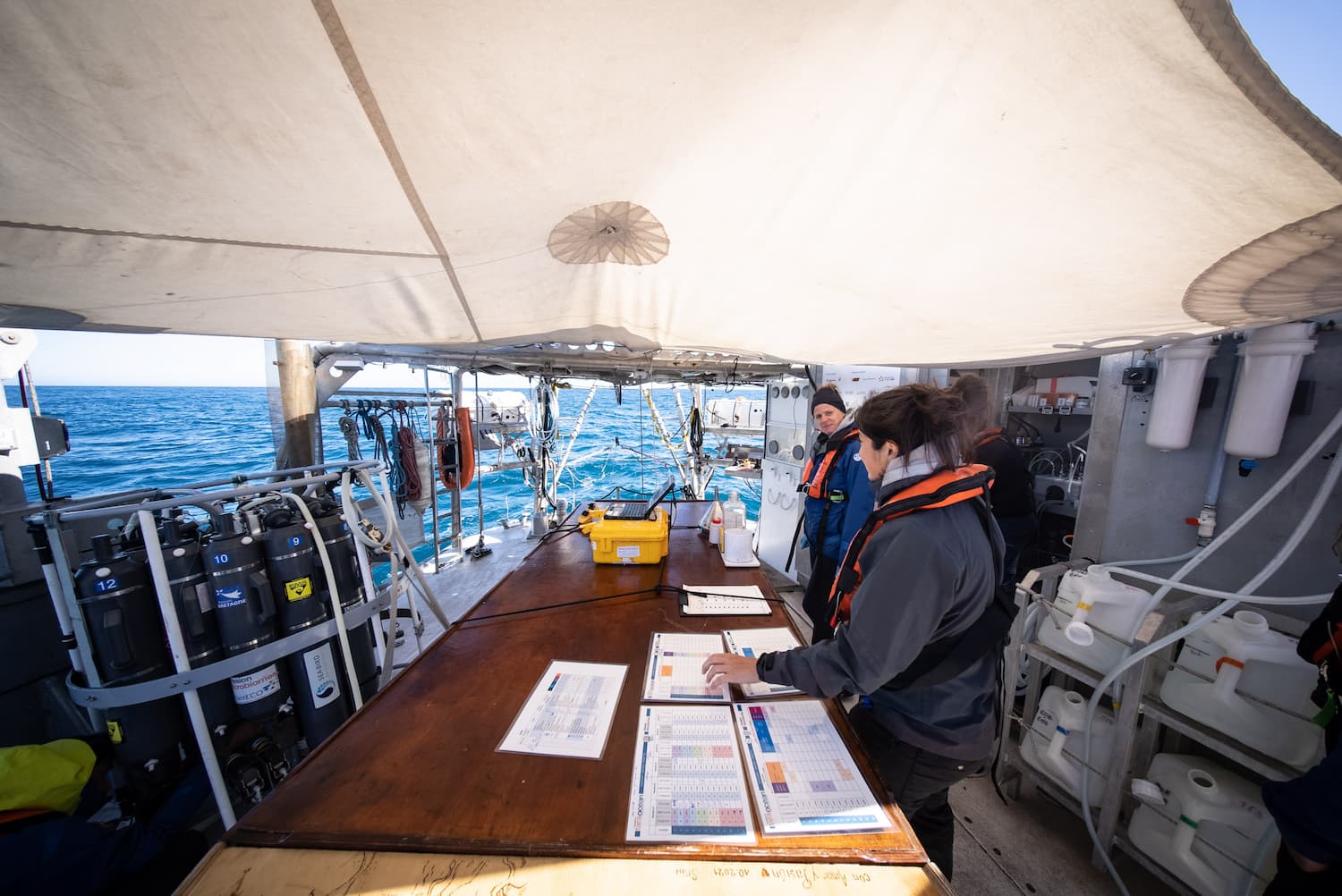
What is a coccolithophore?
It is a unicellular photosynthetic organism, capable of producing oxygen and absorbing carbon dioxide using solar energy. It is essential to study these microorganisms because they are the base of the food chain.
Looking at them under the microscope, we discover very aesthetic “balls”, enclosed in a calcareous shell, composed of small scales of calcium carbonate (comparable to chalk). These microalgae are invisible to the naked eye, except during massive blooms in the ocean. During this seasonal phenomenon, they have the ability to change the color of sea surface. Thanks to this coloring, scientists can detect the presence of these microorganisms on satellite images and therefore localize and sample them.
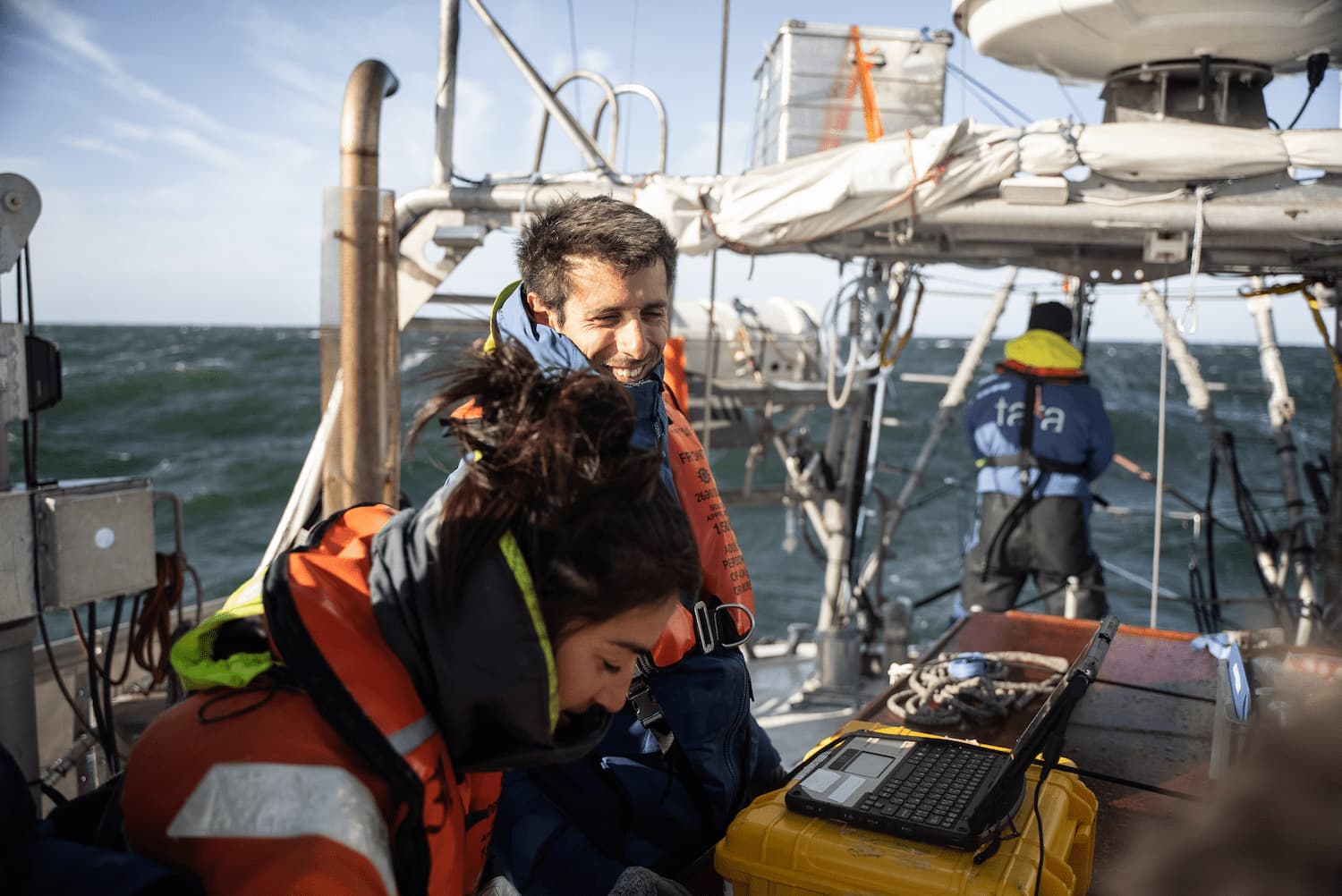
Research takes time, results will come later
The Gayoso mission was designed to study a coccolithophore bloom. Scientists found an area where microalgae appeared to be abundant and sampled the bloom. Mission accomplished! However, research doesn’t stop with sampling. The most important challenge is to analyze the data collected. “The collection part aboard Tara is stimulating, but, from a scientific point of view, I will really know if I‘ve found what we were looking for in the coming months. From a human point of view, I boarded Tara to live a scientific and human experience and since it’s been an amazing adventure, I’m extremely happy.” In a few months, Flora and the scientific team will analyze these samples, and learn if they adopted the right sampling strategy in Argentina.
Being a scientist (and conducting research) is a long-winded occupation. “Even if you’re passionate, it’s not easy every day, you have to be very patient, there are many obstacles and different stages. The scientific process is long and slow: analyzing data, publishing scientific papers, making research accessible, etc. I think returning aboard Tara reminds us why we’re doing this and is also the opportunity to “recharge our batteries”. There, I’ve regained enough strength to last for at least a year and a half.”
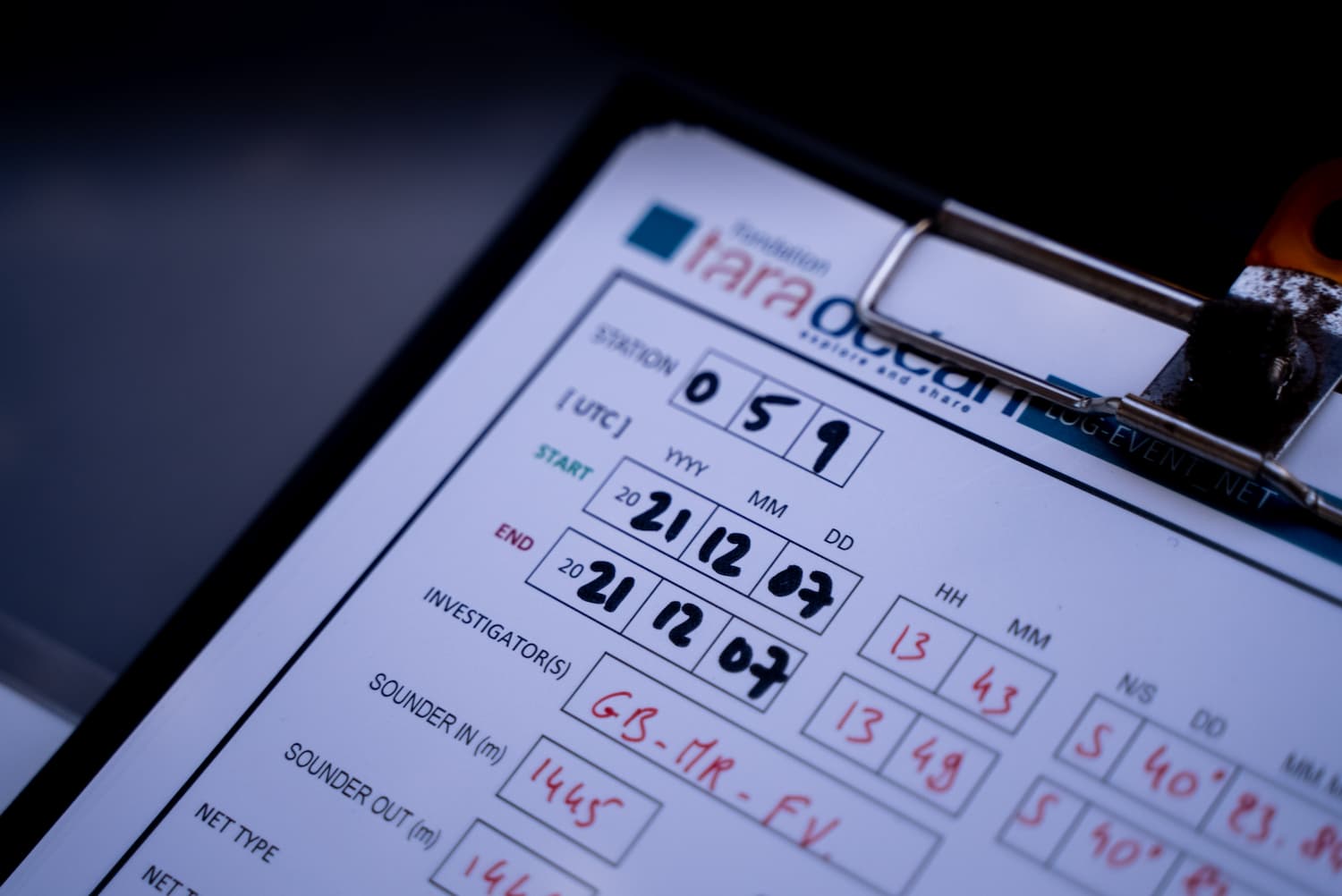
A typical day aboard Tara is intense
Awakening of the scientific team is pretty early. 5:15am, they’re already on deck to start sampling. Science and meals set the pace. Meals are important to structure the daily lives of sailors and scientists aboard Tara. In the morning, sampling is intense, then comes lunchtime that brings the crew together. Since working on a ship and outdoors is tiring, then follow 1h-rest break (or nap). “I never take a nap, it’s not my habit. However, aboard Tara, I developed a taste for it and I see the benefit!” Flora says.
“In the early afternoon, sampling resumed until 6-7pm so that we can have dinner together. We also tried to spend an hour or so exchanging between scientists. A few sailors were always interested in joining us, and sometimes the captain. This was a time when we could discuss what we wanted to do and what needed to be improved.” The end of the day was spent relaxing, chatting and listening to music before bedtime. At night, scientists and sailors shared watches in turn. On board, there’s always something to do. In addition to sampling, we also do household chores, respond to emails and prepare samples (labeling of the next day’s tubes).
During her residence aboard Tara, Flora read Team Jolokia’s comic book entitled Marins d’audace (audacious sailors). “It’s the story of a crew with disabilities that decided to race on ultra-fast sailing boats. This shows that everything is possible. I had already heard of Team Jolokia during my previous stay on board. Reading this comic book was very motivating. It illustrates that there’s no limit to what human beings are capable of doing. We just have to believe it’s achievable.” Flora
Part 1
Study of a coccolithophore bloom
Part 2
Study of a coccolithophore bloom
Her human adventure
The Tara adventure from a researcher’s point of view
After several missions aboard the schooner, we’re curious to understand why Flora is back on board. “I feel like I’m participating in something beyond me. It was already the case when I joined Tara Pacific in 2017. What I love about Tara is that every time we step on board, we become part of a long tradition of expeditions that have been taking place for over 30 years. Tara has a history. My time aboard and our study of coccolithophores is only a small piece of this great story. I like to be part of these long-standing scientific expeditions of the highest level, based on original projects. We thus contribute to a rich scientific heritage in constant evolution. Aboard Tara, we’ve experienced protocols we couldn’t have tried on conventional vessels. The schooner constantly adapts, she’s very versatile with a crew extremely curious and engaged. I really like this innovative and committed aspect of Tara.”
A very special Christmas in the heart of the ocean
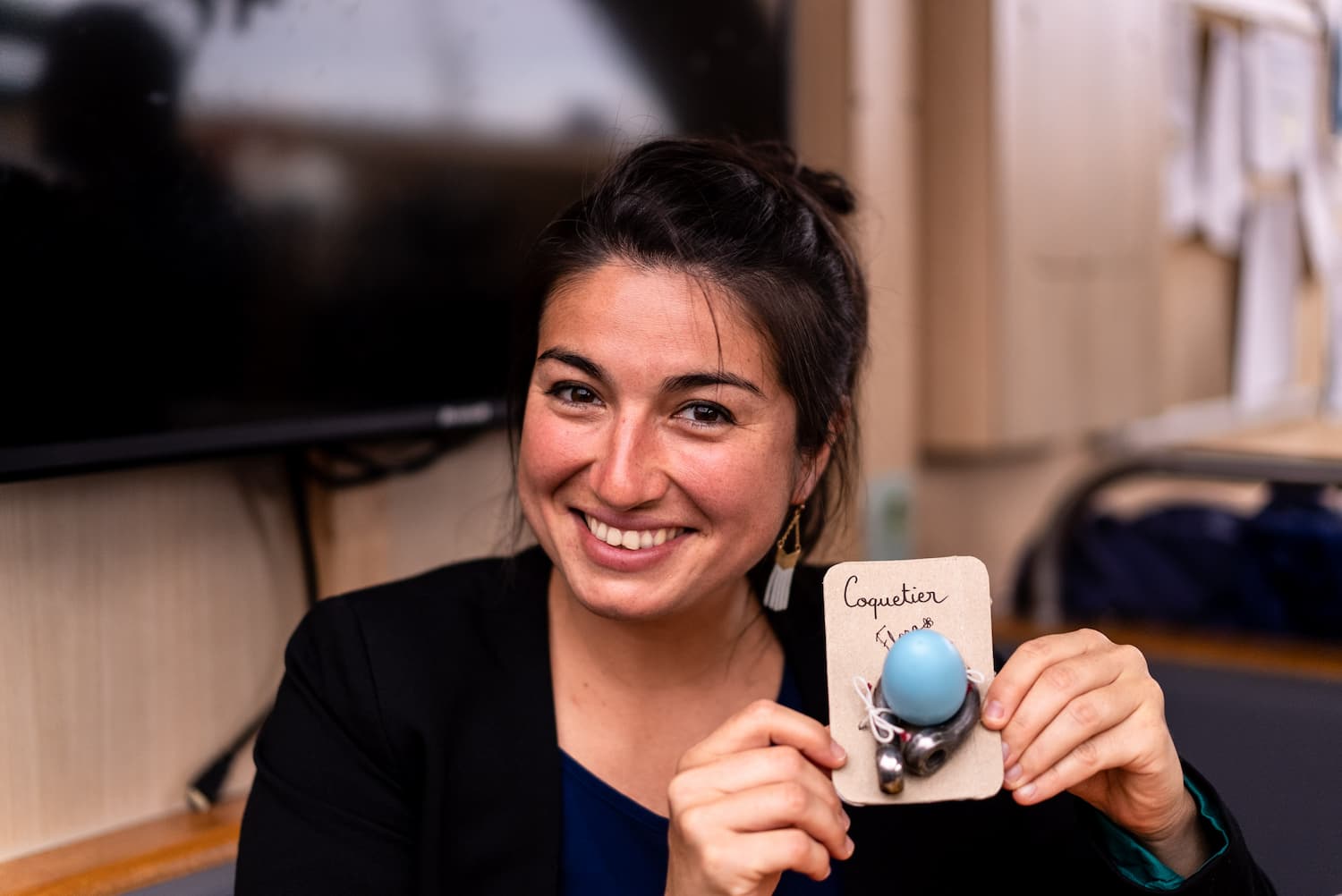
Flora will remember for a long time the Christmas she spent aboard the schooner. Samuel Audrain, Tara’s captain, had the idea of pulling out the extension table in the mess room (the central area of the ship) for Christmas dinner so that all crew members could be seated around the same table. Carole Pire, a sailor and cook, had prepared an excellent meal for this occasion. They all made presents with what they found on board. Far from shops, they had to demonstrate a lot of ingenuity to create a unique moment aboard Tara.
Part 3
Study of a coccolithophore bloom
Sound experience of the scientific ritual
Flora was in residence aboard Tara alongside Antoine Bertin, an artist specialized in sonification — the emission of data in the form of acoustic signals. His goal was to find out how to use the data, specifically the scientific information around us, to create new sounds, and in turn how these sounds could help scientists see things differently.
Antoine collaborated with scientists during sampling and had them discover the power of sounds. “He changed my perceptions with his obsession with sounds. He made me realize that one of the machines I used on the vessel was producing an absolutely awesome sound. Now I pay much more attention to the sounds the machines I use produce. He has developed my auditory sense”. Flora and Antoine want to work together on the scientific ritual to bring art and science together: “Thinking outside the box can only be positive. How can sound and music contribute to increasing scientific experience? I’m particularly curious to see what it will bring us in the coming months.”
Finally, how’s the Ocean?
“I think this is almost a metaphysical question. The Ocean is threatened by many phenomena, including human-caused events, such as warming waters, rising sea levels, ocean acidification, pollution, microplastics and overfishing. As a result, the Ocean isn’t doing very well. And I think what is even more important to realize is that we, the human species, will be the first to pay the price for these excesses. Marine species adapt, they migrate. Some species disappear, others reappear. Obviously, these upheavals will have many impacts including on fish stocks and climate refugees. Today, it’s important to explain that all marine species are affected. We depend on these ecosystems, so if we don’t change our habits, we will all be affected. Humanity must be aware of what’s happening. I’m an optimist by nature, even if there aren’t many reasons to be when we see the health status of our ecosystems. But it’s never too late to change and, with Tara, we continue to move forward by conducting science, making the right decisions and trying to mobilize as many persons as possible.” Flora Vincent
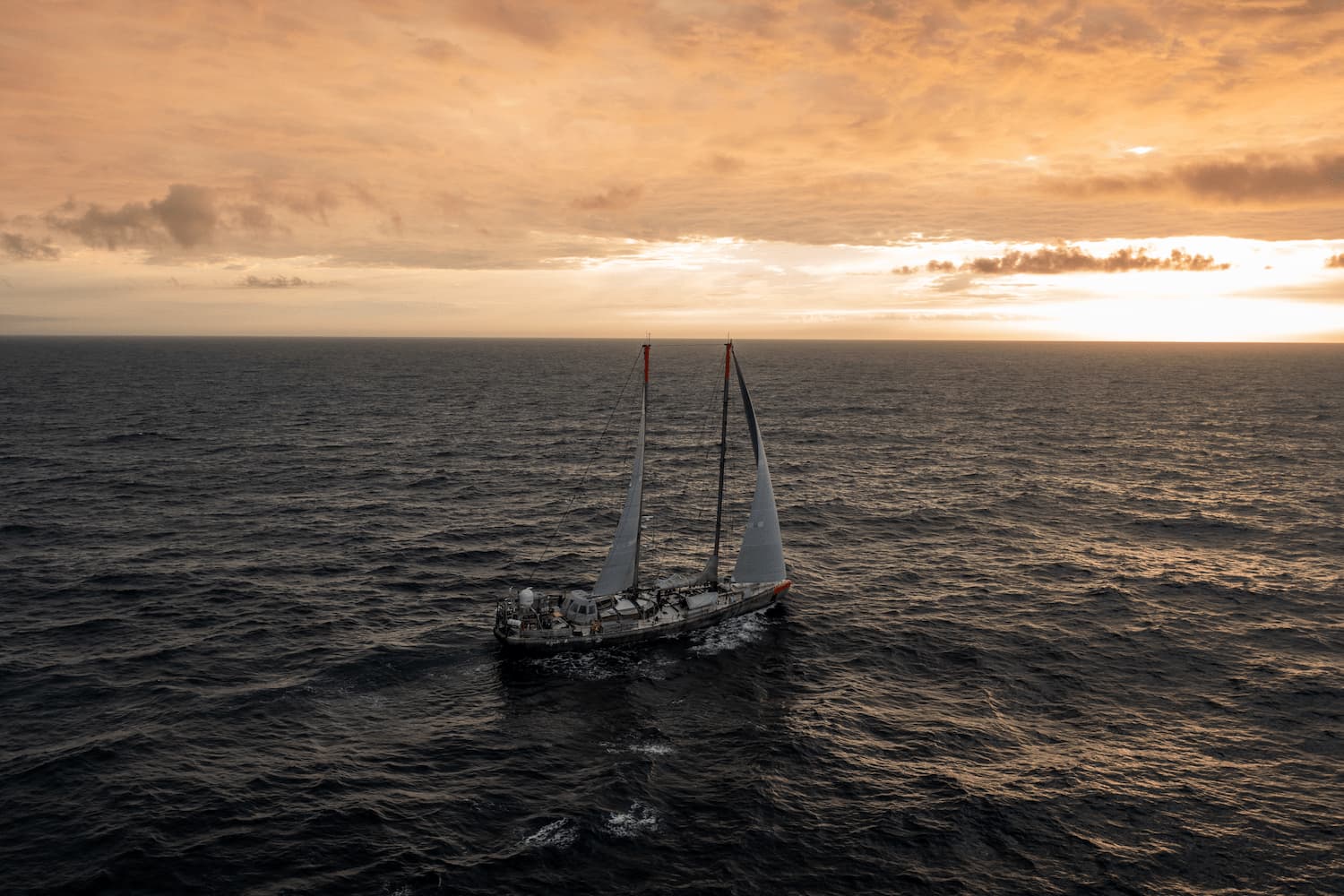
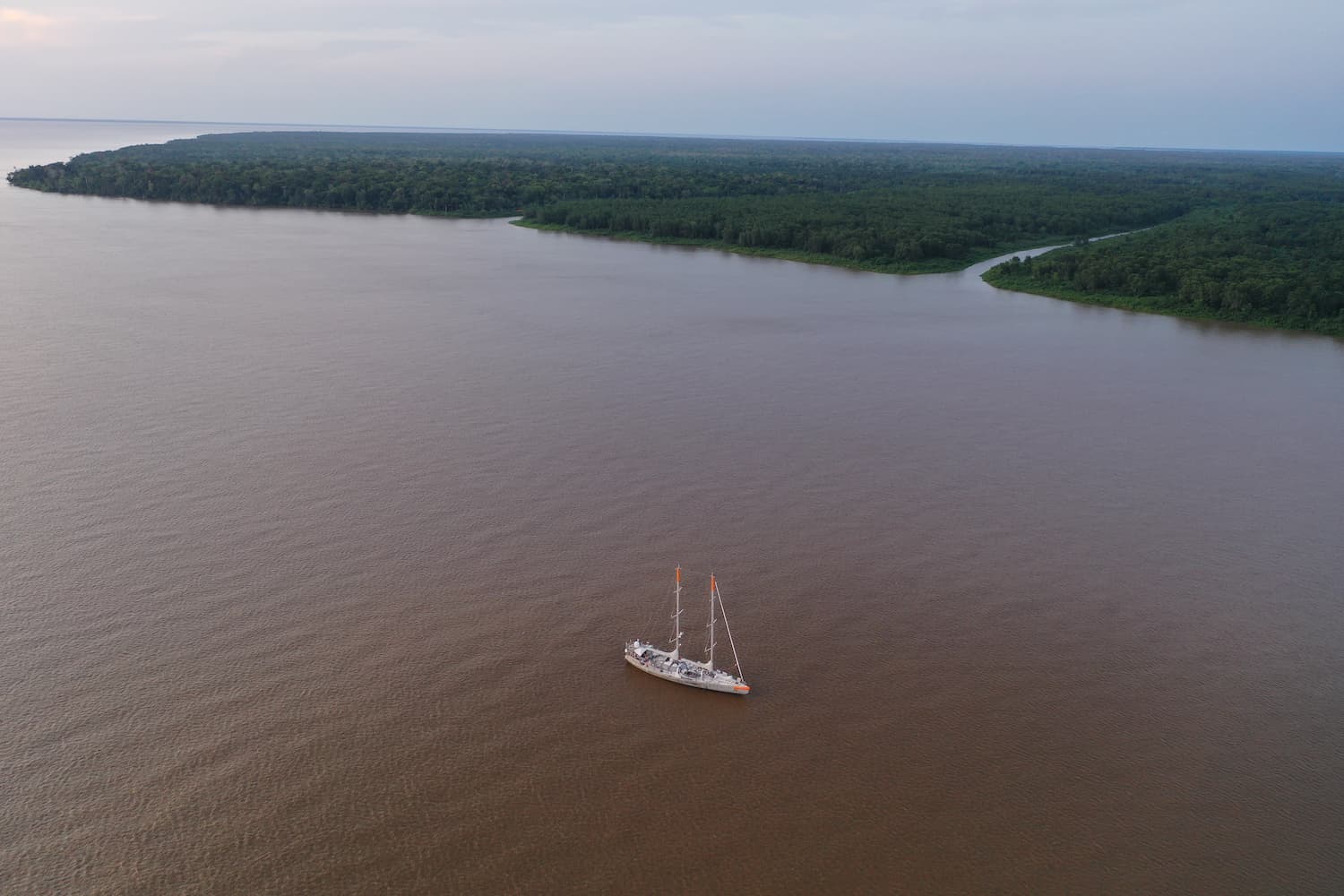
The schooner Tara studied the Brazilian coasts between September and November 2021
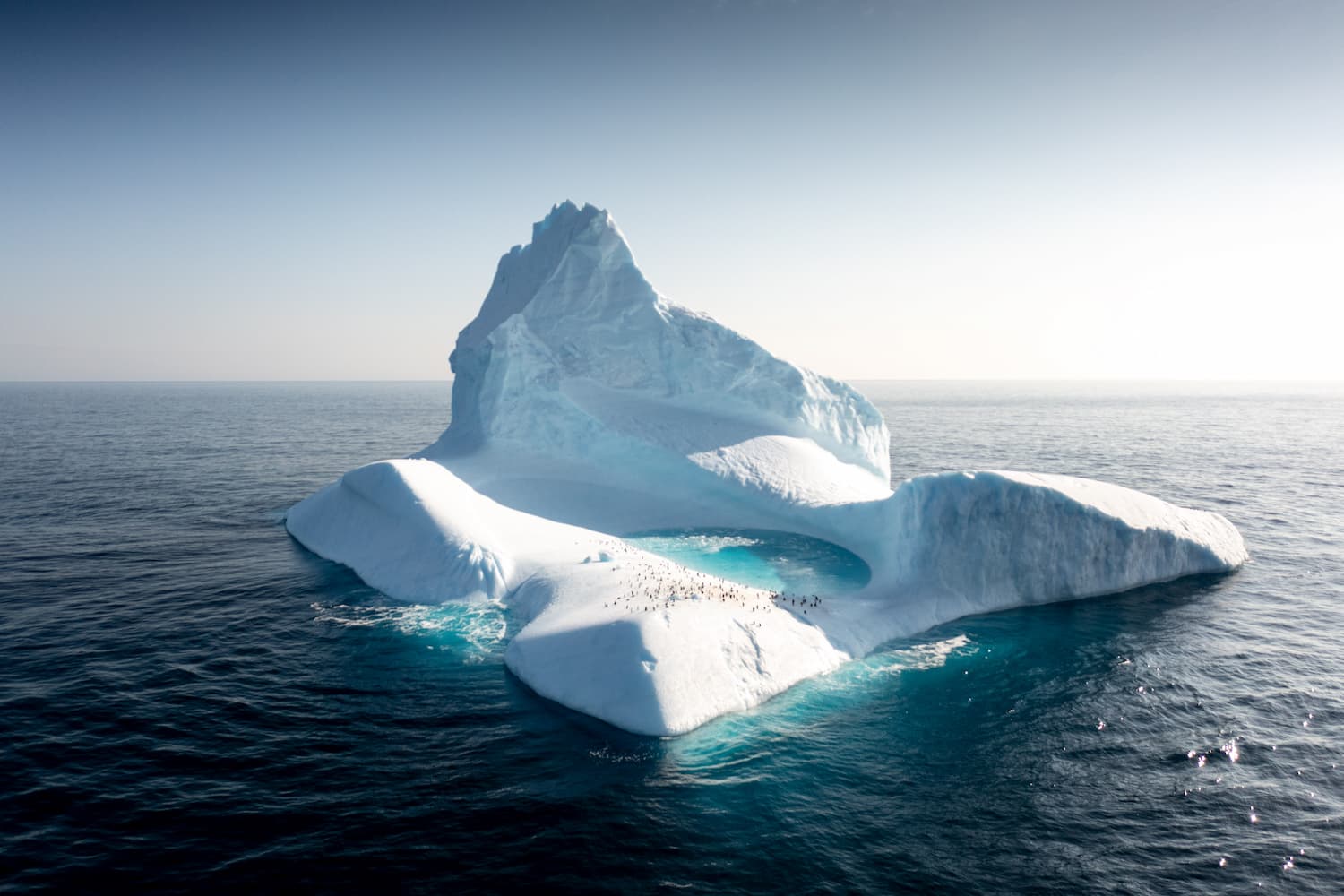
Learn more about this white continent and our scientific studies in Antarctica
